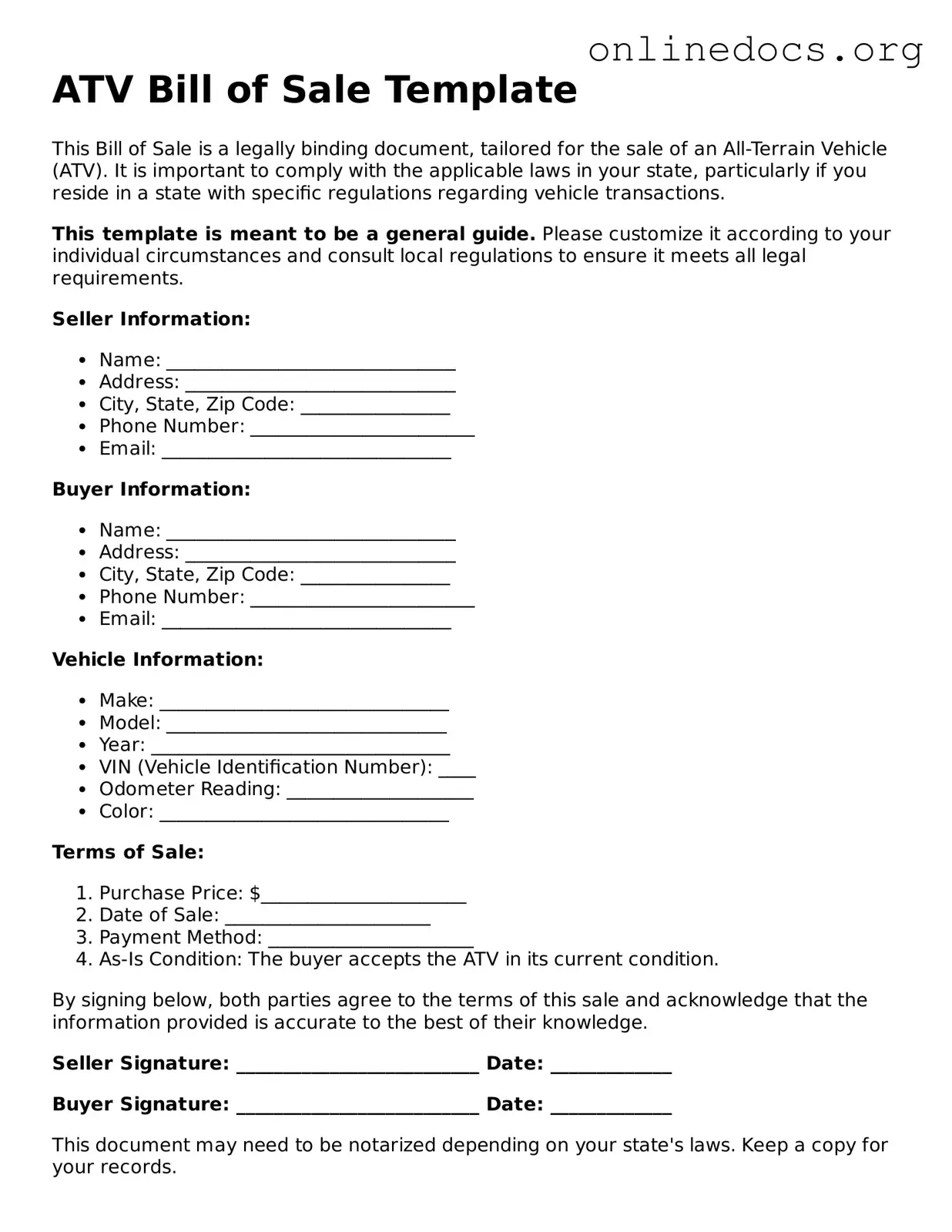The ATV Bill of Sale form is similar to a Vehicle Bill of Sale. Both documents serve as proof of transfer of ownership for a vehicle. When someone sells a car, the seller provides the buyer with a bill of sale that includes essential details such as the vehicle identification number (VIN), make, model, year, and the purchase price. This document protects both parties by documenting the transaction and can be crucial for registration and titling purposes in the future.
Another document that shares similarities with the ATV Bill of Sale is the Boat Bill of Sale. Just like the ATV, a boat requires a bill of sale to transfer ownership legally. This document typically includes information about the boat's make, model, hull identification number, and sale price. Both forms help establish clear ownership, which is especially important for insurance and registration with state authorities.
The Motorcycle Bill of Sale also resembles the ATV Bill of Sale. Motorcycles, like ATVs, are considered recreational vehicles that require a formal transfer of ownership when sold. This document includes details such as the motorcycle's VIN, make, model, year, and the agreed-upon price. Both bills of sale serve the purpose of protecting the rights of the buyer and seller while ensuring compliance with state laws.
A similar document is the Trailer Bill of Sale. Trailers, whether for recreational or utility purposes, also require a bill of sale to document their sale. This form typically includes information about the trailer's VIN, make, model, and purchase price. Just as with ATVs, having this document helps in establishing ownership and is often necessary for registration with local authorities.
The Mobile Home Bill of Sale is another document that parallels the ATV Bill of Sale. When selling a mobile home, a bill of sale is essential for transferring ownership legally. This document includes the mobile home’s identification number, make, model, year, and sale price. It serves to protect both the buyer and seller, ensuring that the transaction is documented and recognized by relevant authorities.
In addition to these various Bill of Sale documents, it is important to understand the role of forms like the Employment Verification form, which is essential in verifying an individual’s work eligibility. This form not only helps employers comply with legal requirements but also ensures a smooth hiring process, making it a vital tool in employment practices. For further details on the Employment Verification form, you can visit legalformspdf.com.
The Firearm Bill of Sale is also akin to the ATV Bill of Sale in that it documents the transfer of ownership for a firearm. This document includes details about the firearm, such as make, model, serial number, and the buyer and seller's information. Both forms are important for legal compliance and can help prevent disputes regarding ownership in the future.
In addition, the Pet Bill of Sale bears resemblance to the ATV Bill of Sale. When someone sells a pet, a bill of sale can be used to document the transfer of ownership. This document typically includes information about the pet, such as breed, age, and any relevant health information. Both bills serve to formalize the transaction and can provide peace of mind to both parties involved.
Lastly, the Equipment Bill of Sale is similar to the ATV Bill of Sale, particularly in the context of heavy machinery or tools. This document records the sale of equipment, including details such as the make, model, serial number, and sale price. Just like with ATVs, having a bill of sale for equipment ensures that both parties have a clear understanding of the transaction and protects their rights as buyers and sellers.
